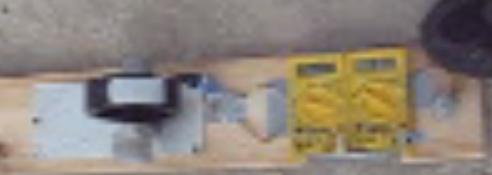 Attached video Attached video |
| Hello All,
February 25, 2009 South Padre Island (SPI) at the southern tip of Texas is a kite paradise year around. The latest SPI Kite Festival attracted 5500 visitors, comparable to WSKIF in recent years. An old friend "Amazin' Walter, the Sandcastle King" & some groupies assisted & were duly impressed at the simplicity & viability of the tech. Many new Flip-Wings were tested; some now sweep AWEsomely the full width of the power-zone, reverting to a narrower sweep with rising winds. It will be easy to use a micro-actuator to tune a wing to a given mode v. the daunting problem of active kite control with control-insufficiency. Optimal Flip-Wings have battens laid out like the original "fish-tail run backwards". This bit of structure adds hardly any weight but greatly mitigates torsional elastic loss.  Its clear that kite energy gets the most out of a wind resource if a quiver of wings are used. Multi-gearing, multi-lifters, multi-lines, & multi-generators further maximize output. Sailboat racing is a close analogy for a swap-intensive system. In many real-world situations human labor will beat automation for a long time to come. A series of clutch bearings along a shaft is clearly a practical means of rectifying oscillation into rotary power, no added flywheel mass is required if sufficient inputs are added. This stage of the kite-power loop may fly at high altitudes, with a high-speed cableway driving a ground-based generator. The prototype has reverted to the earlier "Sputnik" bowdrill mechanism which has a greater dynamic range than a lever-arm. The newest design uses an Egyptian bowdrill mech, an ancient refinement of the paleo bowdrill, where the line is tied to the spindle & wound in both directions. For the Flip-Wing kite application one line is the elastic return & requires a considerable dynamic range for varied conditions. The current prototype had a section of surgical tubing which too soon hit its limit in high amplitude pulses. For the future, JohnB proposes a spring winder based on garage door lifters. It is somewhat long but the helical spring stores a lot of reel turns compared to an even longer bungee. Such a spring is noncontacting with its shaft, preventing sticky friction over time. The AWE H2 loop idea continues to intrigue for its potential to smooth out power & load. The latest insight is that it might respond well to transients far faster than any purely mechanical solution. Attached video shows the loaded (5w rated) KiteLab AWE system responding to a gust in the turbulent lee of a resort tower. Output is in the 5V USB range. Dave Santos KiteLab Ilwaco, WA Austin, TX |